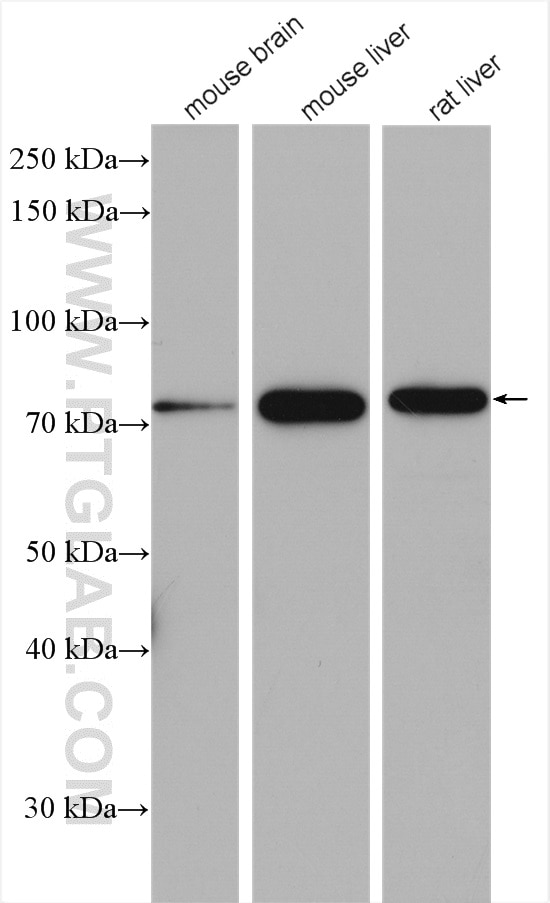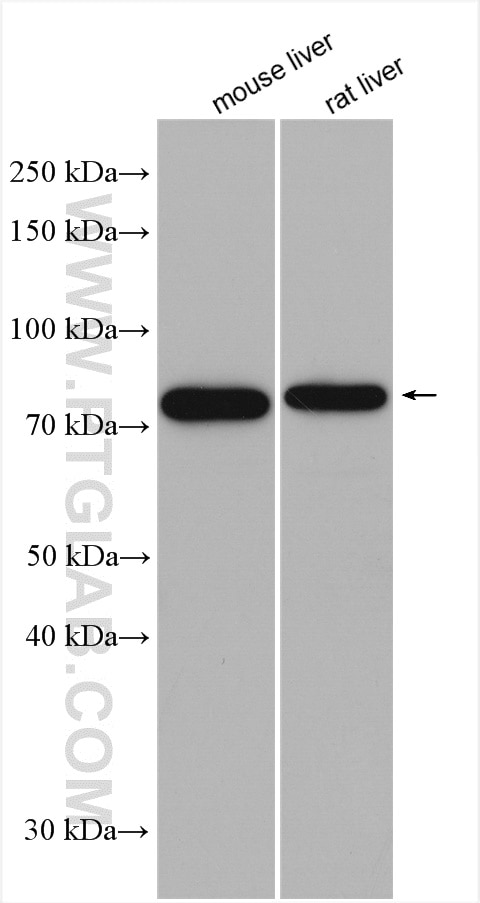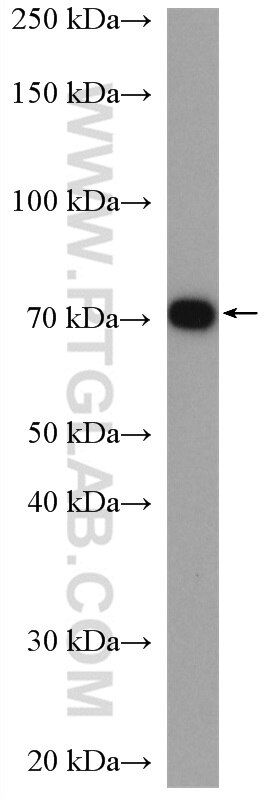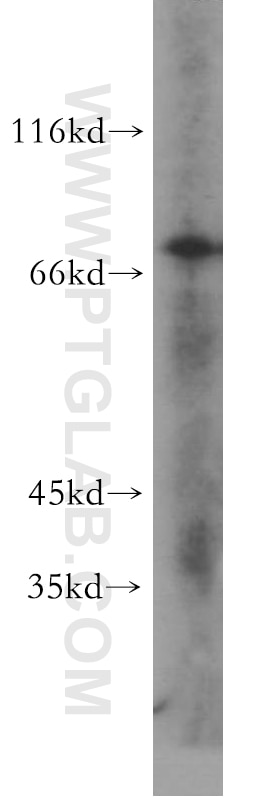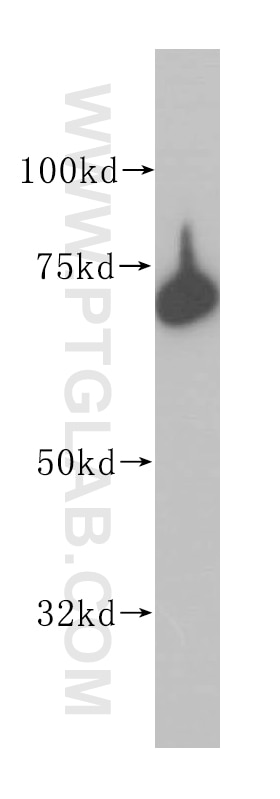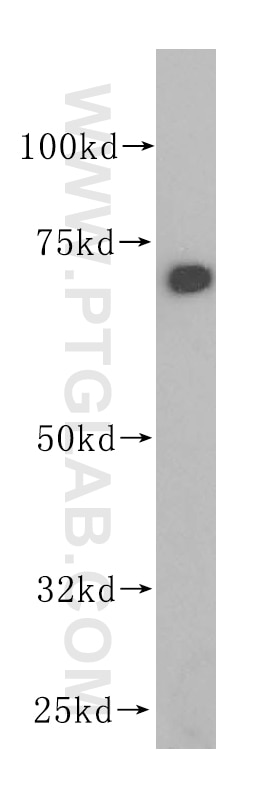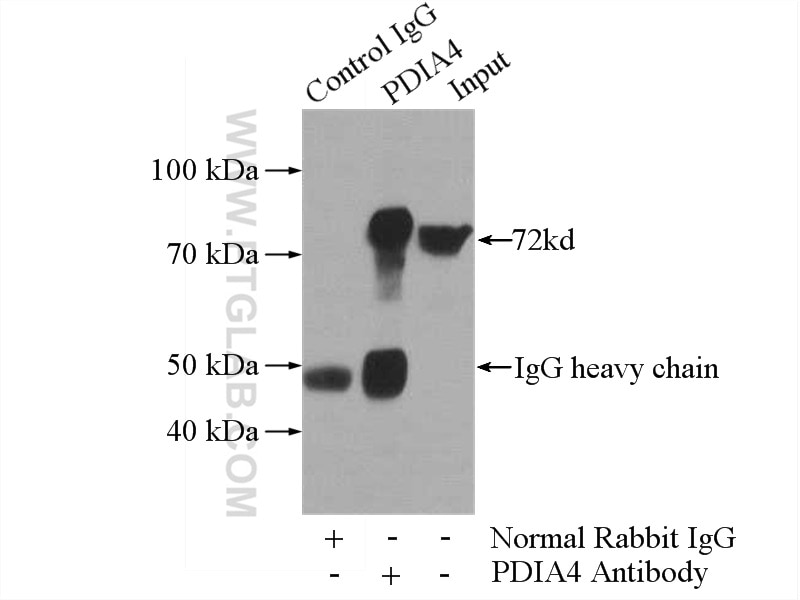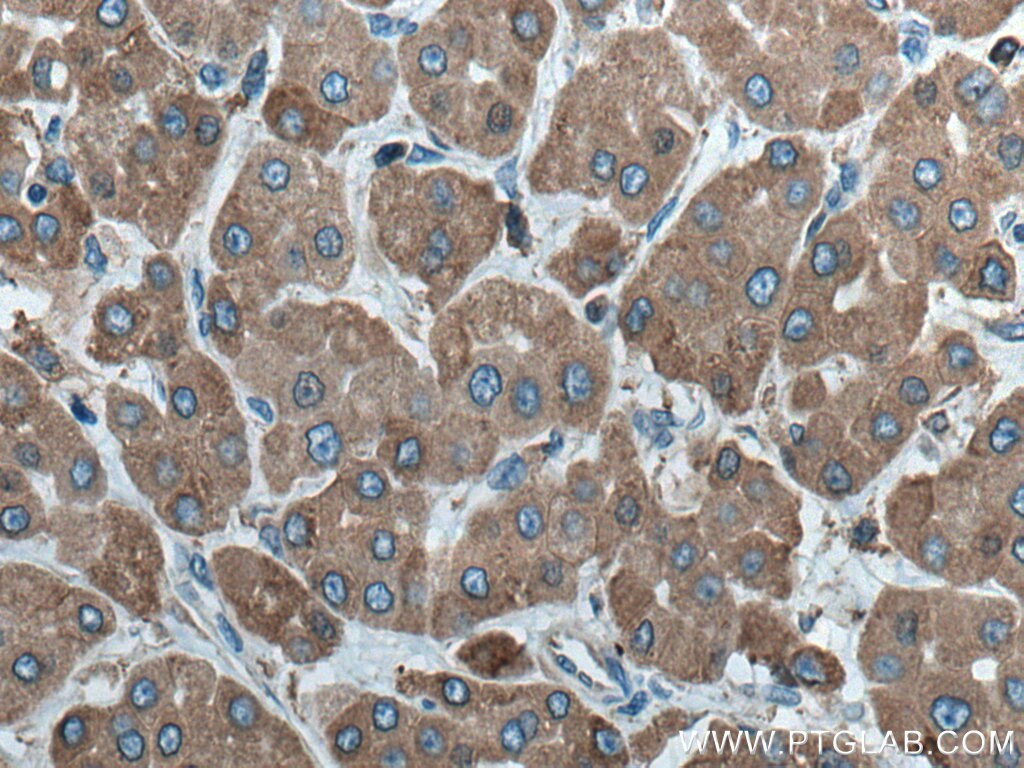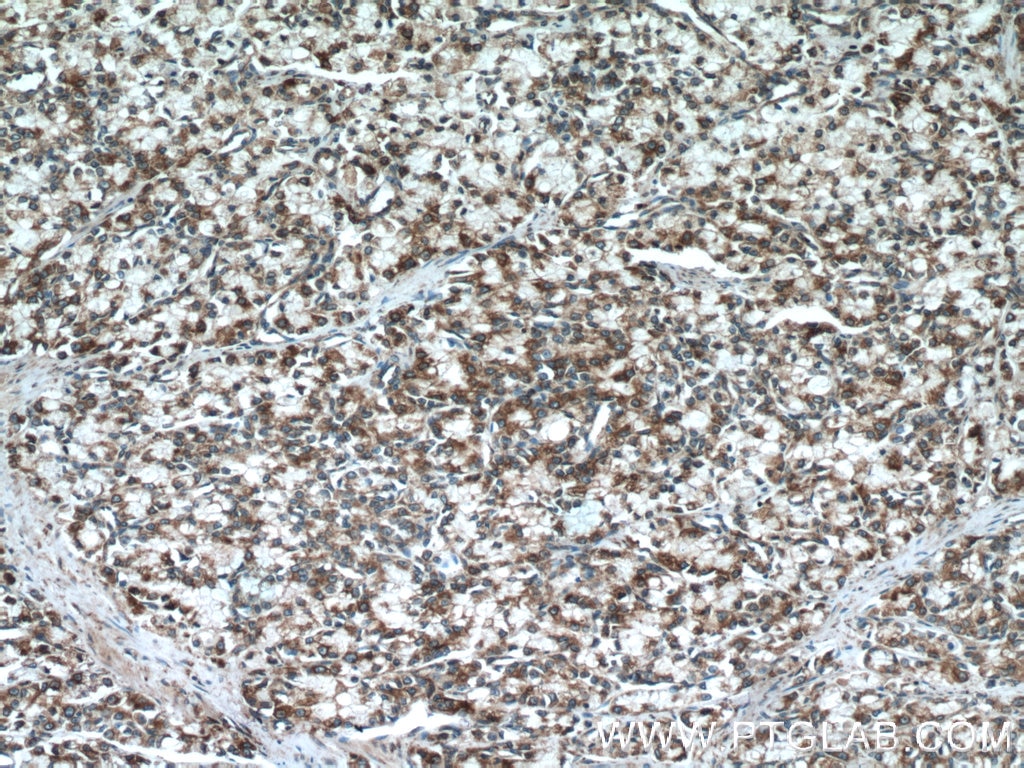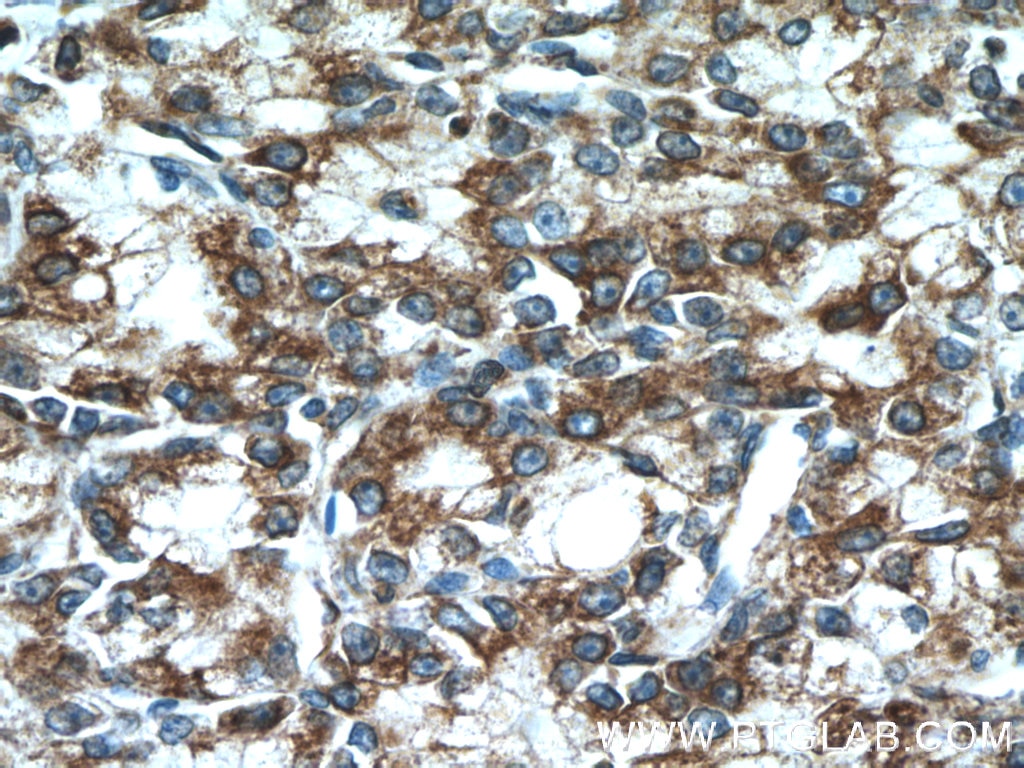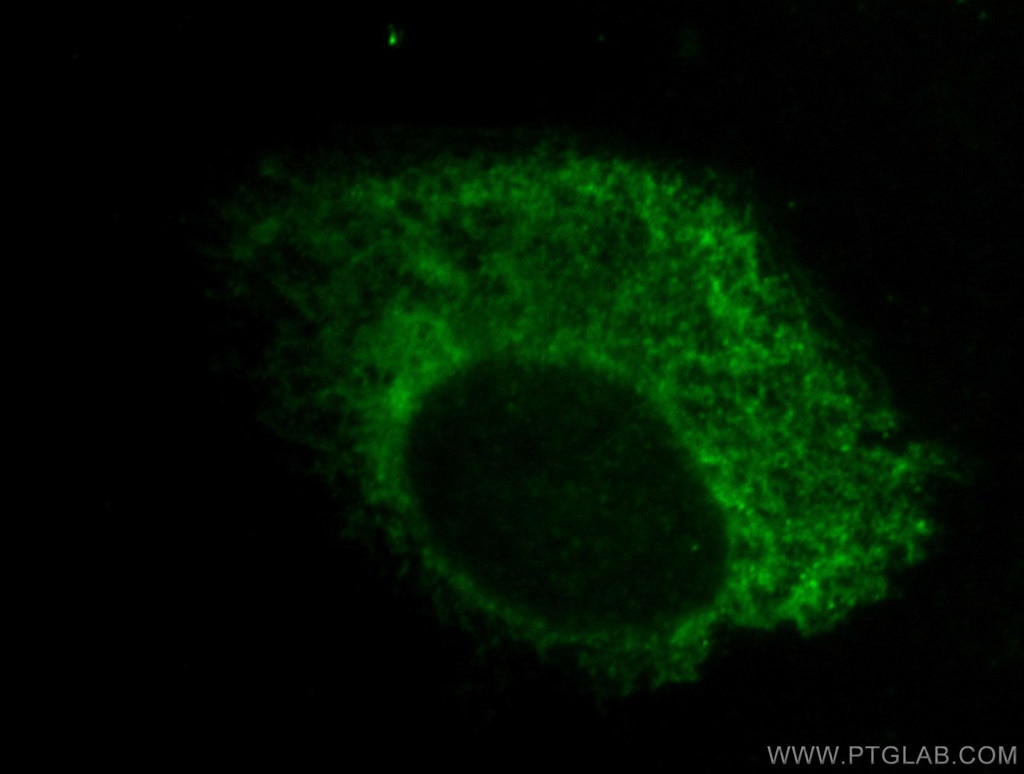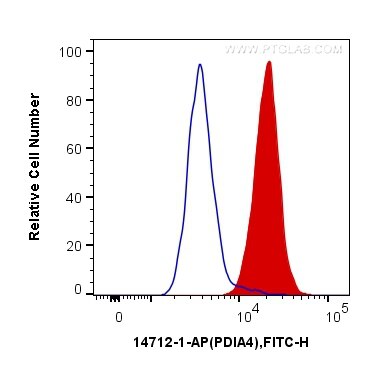- Featured Product
- KD/KO Validated
ERp72 Polyklonaler Antikörper
ERp72 Polyklonal Antikörper für FC, IF, IHC, IP, WB, ELISA
Wirt / Isotyp
Kaninchen / IgG
Getestete Reaktivität
human, Maus, Ratte und mehr (2)
Anwendung
WB, IP, IHC, IF, FC, CoIP, ELISA
Konjugation
Unkonjugiert
Kat-Nr. : 14712-1-AP
Synonyme
Galerie der Validierungsdaten
Geprüfte Anwendungen
| Erfolgreiche Detektion in WB | Maushirngewebe, HeLa-Zellen, HepG2-Zellen, L02-Zellen, Mauslebergewebe, Rattenlebergewebe |
| Erfolgreiche IP | HeLa-Zellen |
| Erfolgreiche Detektion in IHC | humanes Leberkarzinomgewebe, humanes Prostatakarzinomgewebe Hinweis: Antigendemaskierung mit TE-Puffer pH 9,0 empfohlen. (*) Wahlweise kann die Antigendemaskierung auch mit Citratpuffer pH 6,0 erfolgen. |
| Erfolgreiche Detektion in IF | PC-3-Zellen |
| Erfolgreiche Detektion in FC | HepG2-Zellen |
Empfohlene Verdünnung
| Anwendung | Verdünnung |
|---|---|
| Western Blot (WB) | WB : 1:2000-1:10000 |
| Immunpräzipitation (IP) | IP : 0.5-4.0 ug for 1.0-3.0 mg of total protein lysate |
| Immunhistochemie (IHC) | IHC : 1:500-1:2000 |
| Immunfluoreszenz (IF) | IF : 1:20-1:200 |
| Durchflusszytometrie (FC) | FC : 0.40 ug per 10^6 cells in a 100 µl suspension |
| It is recommended that this reagent should be titrated in each testing system to obtain optimal results. | |
| Sample-dependent, check data in validation data gallery | |
Veröffentlichte Anwendungen
| KD/KO | See 4 publications below |
| WB | See 26 publications below |
| IHC | See 2 publications below |
| IF | See 11 publications below |
| CoIP | See 1 publications below |
Produktinformation
14712-1-AP bindet in WB, IP, IHC, IF, FC, CoIP, ELISA ERp72 und zeigt Reaktivität mit human, Maus, Ratten
| Getestete Reaktivität | human, Maus, Ratte |
| In Publikationen genannte Reaktivität | human, Affe, Hausschwein, Maus |
| Wirt / Isotyp | Kaninchen / IgG |
| Klonalität | Polyklonal |
| Typ | Antikörper |
| Immunogen | ERp72 fusion protein Ag6431 |
| Vollständiger Name | protein disulfide isomerase family A, member 4 |
| Berechnetes Molekulargewicht | 73 kDa |
| Beobachtetes Molekulargewicht | 72 kDa |
| GenBank-Zugangsnummer | BC000425 |
| Gene symbol | PDIA4 |
| Gene ID (NCBI) | 9601 |
| Konjugation | Unkonjugiert |
| Form | Liquid |
| Reinigungsmethode | Antigen-Affinitätsreinigung |
| Lagerungspuffer | PBS mit 0.02% Natriumazid und 50% Glycerin pH 7.3. |
| Lagerungsbedingungen | Bei -20°C lagern. Nach dem Versand ein Jahr lang stabil Aliquotieren ist bei -20oC Lagerung nicht notwendig. 20ul Größen enthalten 0,1% BSA. |
Hintergrundinformationen
PDIA4(Protein disulfide-isomerase A4) is also named as ERP70, ERP72 and belongs to the protein disulfide isomerase family. It catalyzes the rearrangement of -S-S- bonds in proteins. ERp72 is a soluble protein localized in the ER lumen and contains the COOH-terminal retention signal, KEEL. There are 6 cysteine residues in the amino acid sequences of mouse and human ERp72. All of the cysteine residues occur in the internal thioredoxin motif, CGHC(PMID:15475357). The full length protein has a signal peptide with 20 amino acid.
Protokolle
| Produktspezifische Protokolle | |
|---|---|
| WB protocol for ERp72 antibody 14712-1-AP | Protokoll herunterladen |
| IHC protocol for ERp72 antibody 14712-1-AP | Protokoll herunterladen |
| IF protocol for ERp72 antibody 14712-1-AP | Protokoll herunterladen |
| IP protocol for ERp72 antibody 14712-1-AP | Protokoll herunterladen |
| Standard-Protokolle | |
|---|---|
| Klicken Sie hier, um unsere Standardprotokolle anzuzeigen |
Publikationen
| Species | Application | Title |
|---|---|---|
J Thromb Haemost SINE-VNTR-Alu retrotransposon insertion as a novel mutational event underlying Glanzmann thrombasthenia | ||
Elife Small molecule proteostasis regulators that reprogram the ER to reduce extracellular protein aggregation. | ||
Cell Chem Biol Quantitative Interactome Proteomics Reveals a Molecular Basis for ATF6-Dependent Regulation of a Destabilized Amyloidogenic Protein. | ||
Elife PDIA1/P4HB is required for efficient proinsulin maturation and ß cell health in response to diet induced obesity. | ||
Mol Cell Proteomics Thyroglobulin Interactome Profiling Defines Altered Proteostasis Topology Associated With Thyroid Dyshormonogenesis |
